Outputs
Output from the project has taken many forms. In addition to informal notices, web-based information and other associated material, the soil centre has produced a series of scientific journal publications resulting from the research-based analytical side of the project and reports detailing our analysis of survey data and results. In this section we provide details of much of this information.
Outputs
Journal Publications
Below are articles in scientific journals, which report the research conducted by the OPAL Soil Centre. Please click on the images below to download PDF versions of the articles direct from the publishers website. As academic publishers publish these articles, you may be asked to pay to access the article if you do not have a subscription to the journal. Your local library might be able to help you get a copy of the journal article.
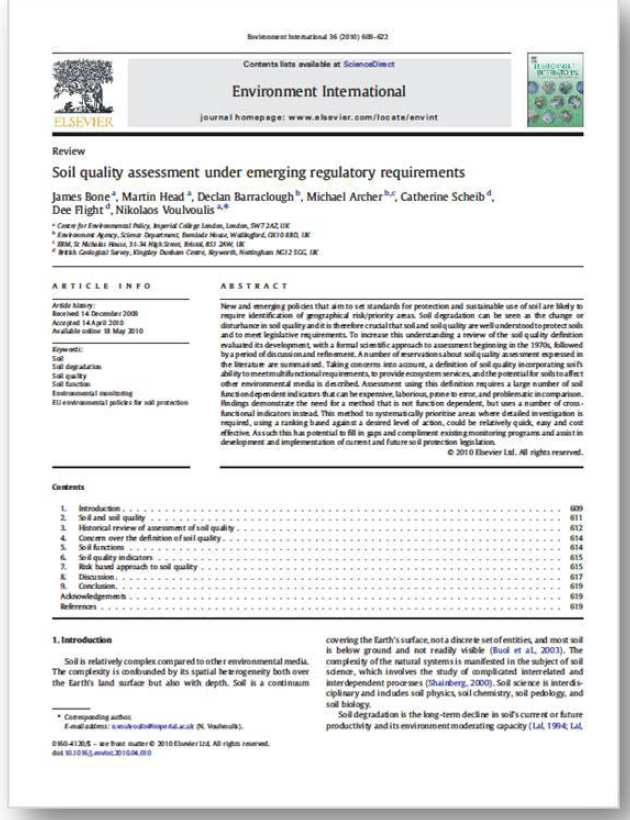 |
Soil quality assessment under emerging regulatory requirements. J. Bone, M.K. Head, D. Barraclough, M. Archer, C. Scheib, D. Flight, and N. Voulvoulis. 2010. Environment International, Volume 36, Issue 6, Pages 609-622. DOI: 10.1016/j.envint.2010.04.010 |
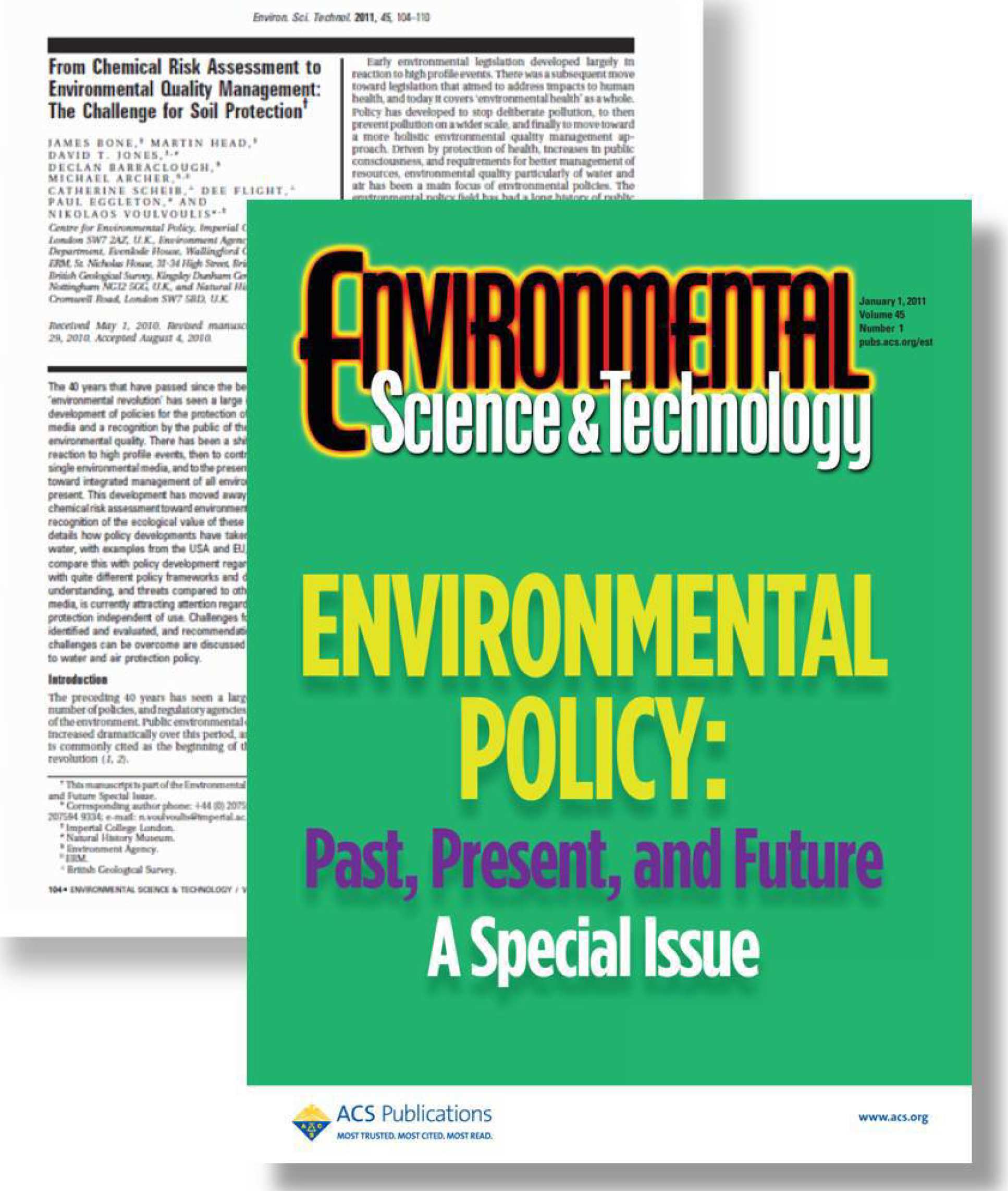 |
From Chemical Risk Assessment to Environmental Quality Management: The Challenge for Soil Protection. J. Bone, M.K. Head, D.T. Jones, D. Barraclough, M. Archer, C. Scheib, D. Flight, P. Eggleton, and N. Voulvoulis. 2011. Environmental Science and Technology. Volume 45 Issue 1, Pages 104–110. Part of the Environmental Policy: Past, Present, and Future special issue. DOI: 10.1021/es101463y |
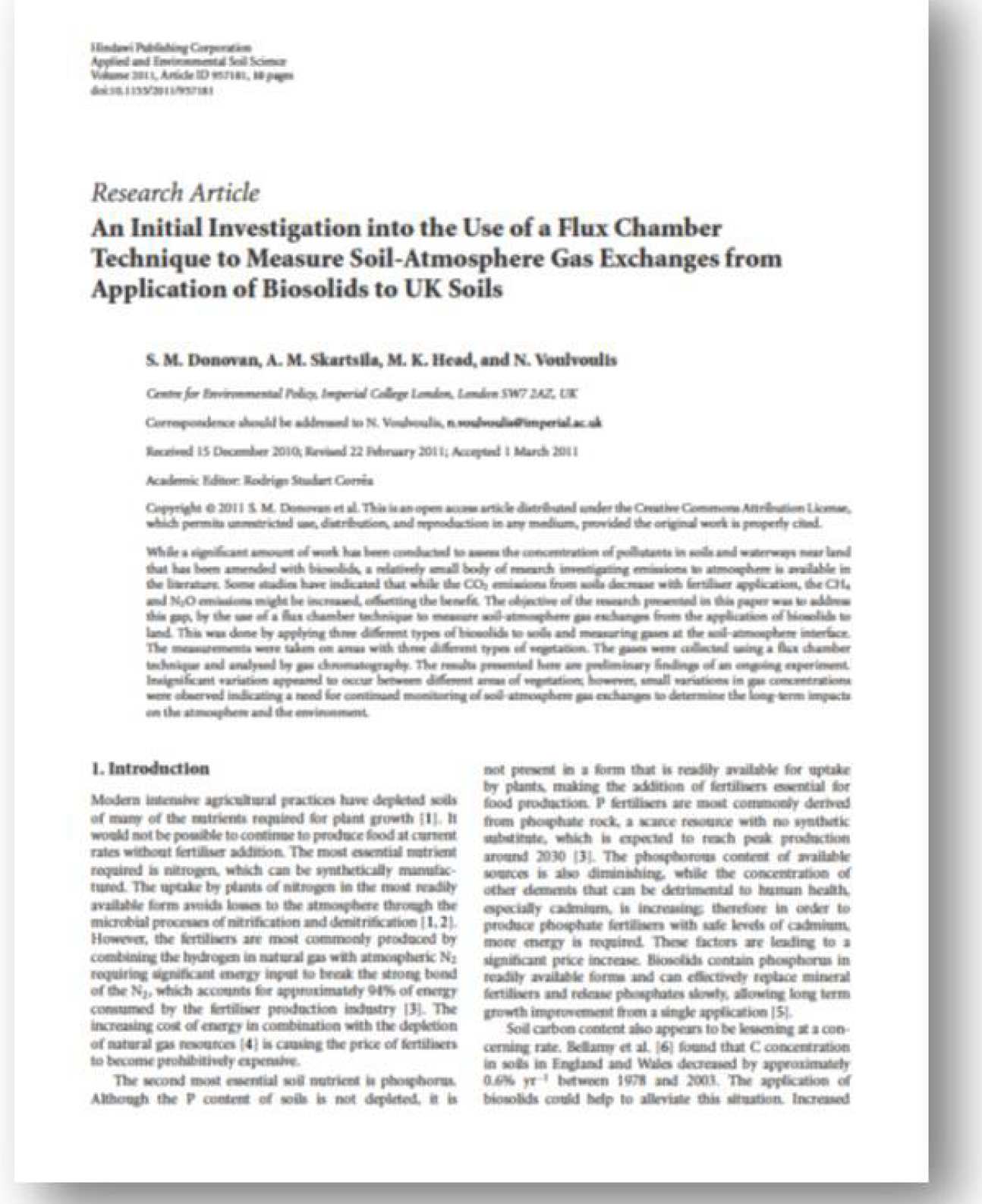 |
An Initial Investigation into the Use of a Flux Chamber Technique to Measure Soil-Atmosphere Gas Exchanges from Application of Biosolids to UK Soils. |
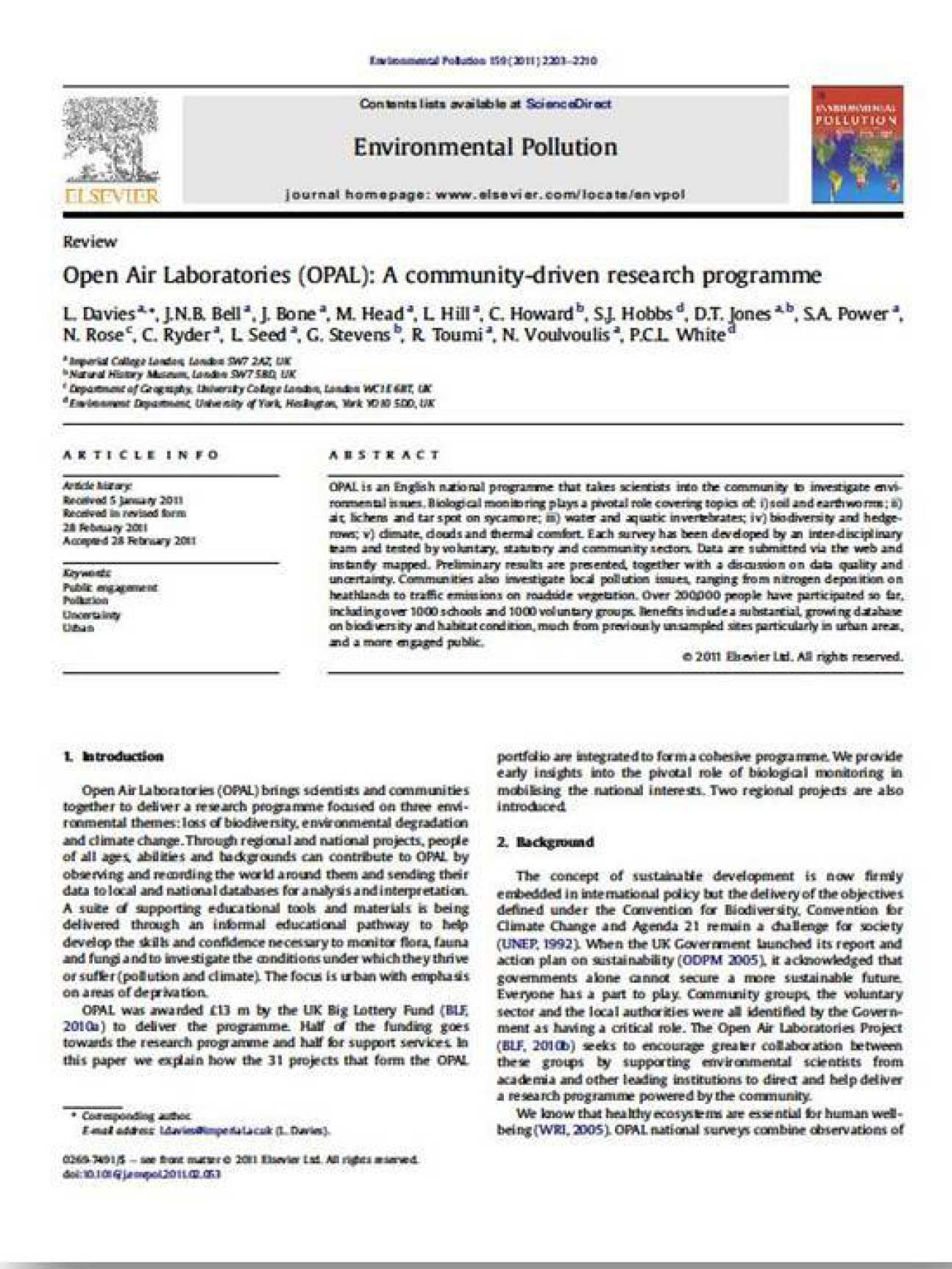 |
Open Air Laboratories (OPAL): A Community-driven research programme. |
 |
Prioritising Soil Quality Assessment Through the Screening of Sites: The Use of Publicly Collected Data |
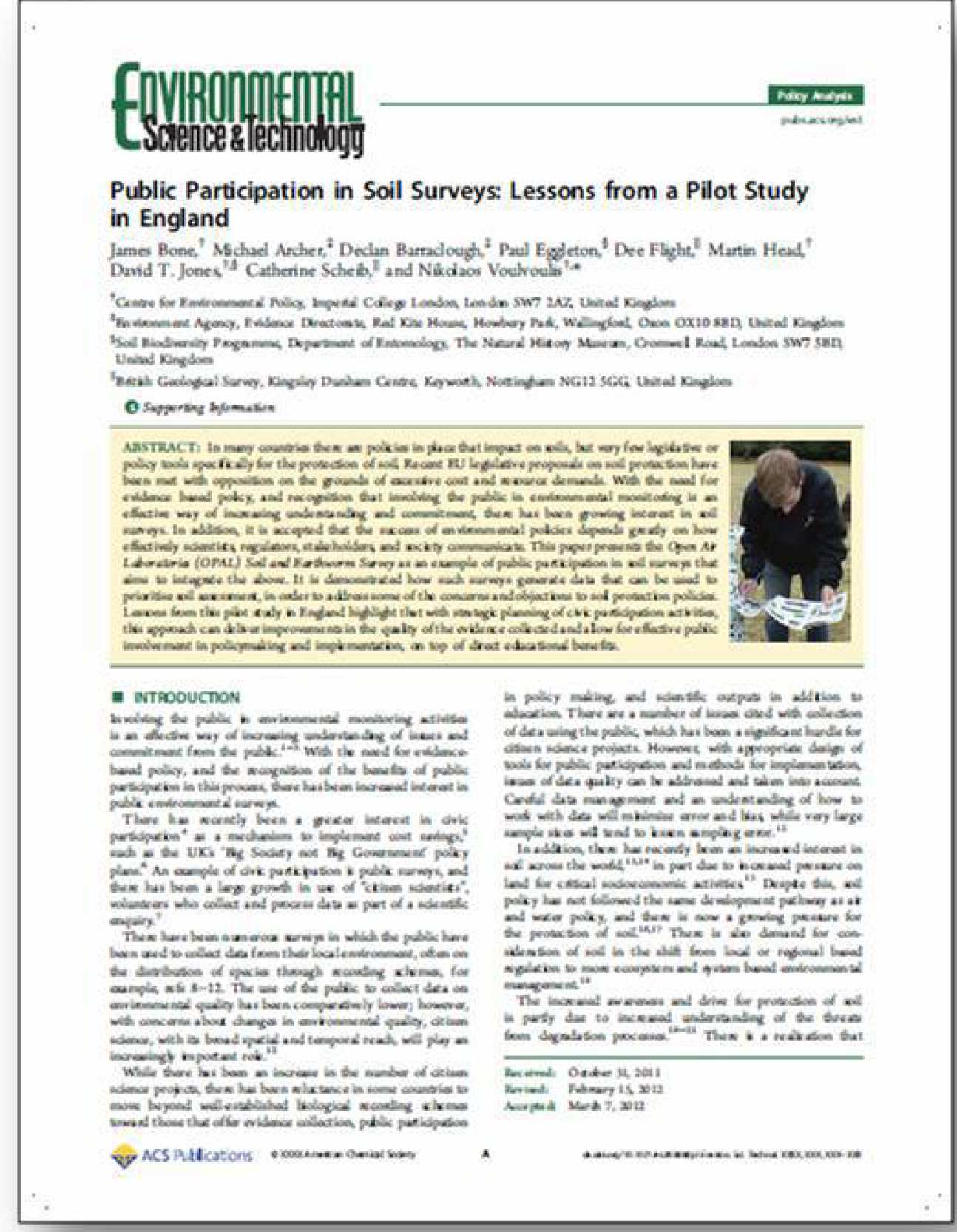 |
Public participation in soil surveys: lessons from a pilot study in England. |
Reports
Soil and Earthworm Survey Reports
The OPAL Soil Centre have published two technical reports which detail analysis of the first set of results from the OPAL Soil and Earthworm Survey and an assessment of data quality for use by groups using the data from the survey. Further reports will be detailed here nearer to the end of the project.
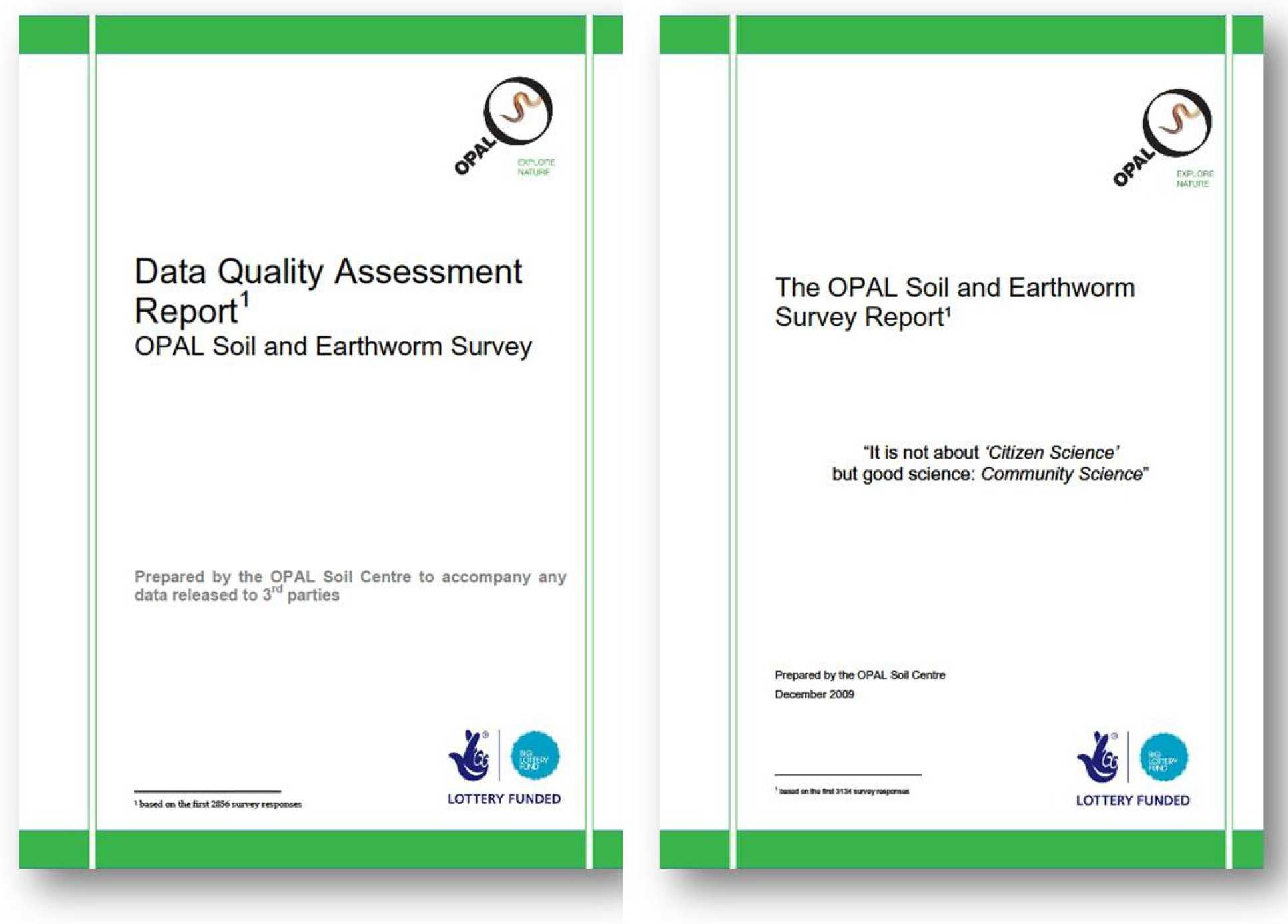 Data Quality Assessment Report
Data Quality Assessment Report
Soil and Earthworm Survey Report
UK Environmental Observation Framework
Dr David Jones and Dr James Bone have contributed a case study on the OPAL Soil and Earthworm Survey to the UK EOF comprehensive report that presents current knowledge and experiences of using citizen science.
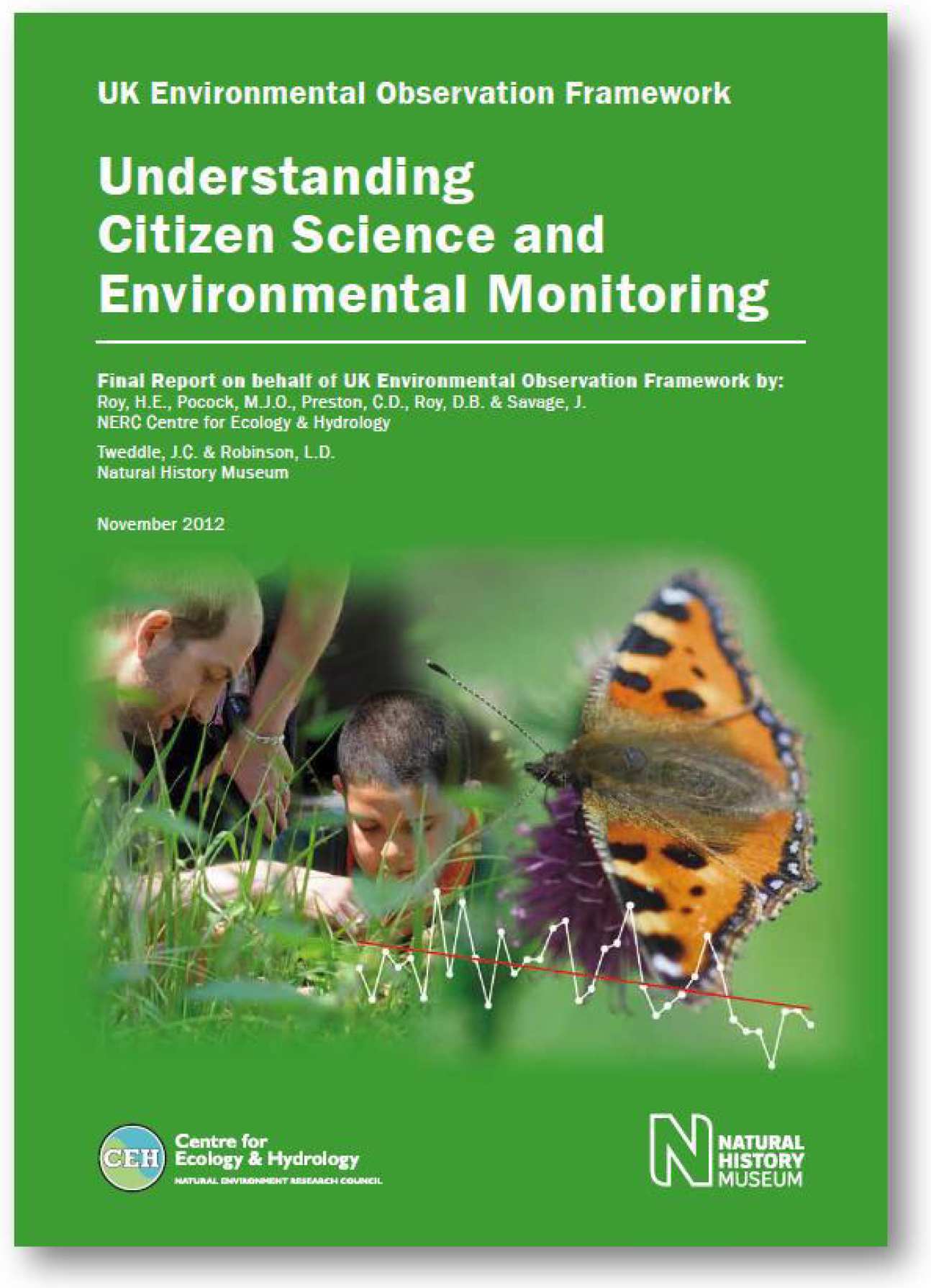
The reference for the report is:
Roy, H.E., Pocock, M.J.O., Preston, C.D., Roy, D.B., Savage, J., Tweddle, J.C. & Robinson, L.D. (2012) Understanding Citizen Science & Environmental Monitoring. Final Report on behalf of UK-EOF. NERC Centre for Ecology & Hydrology and Natural History Museum.
Community Environment Report
As part of its undertaking to OPAL, the soils project have contributed details of its results analysis to the OPAL Community Environment Report.
This report was launched on the 22st January 2013, and draws together the interim findings of all projects funded under the OPAL project portfolio. You can read the report, download a copy or request a printed copy from the OPAL website.
Survey Data
OPAL Web Portal
All data submitted by participants is uploaded to the main OPAL web portal. The portal allows this data to be collated into one massive database, where built in tools instantly feed back simple statistics and analysis of results. Users are able to view their survey locations on Google based maps, and to see how their information fits with data uploaded by other participants through the use of interactive maps and graphs. All data uploaded to the site is downloaded and sent to the soil centre for regular analysis, which helps us to monitor trends in data patterns and develop our research agenda.
National Biodiversity Network (NBN)
Survey data has been added to the NBN's website. The main focus for this is to provide a new dataset of earthworm species as reported through the survey findings. This data will be updated periodically through to project end in late 2012. Please follow the link below to access the dataset via the NBN:
What have we discovered so far?
Earthworm expert David Jones takes a closer look at all the surveys submitted - Read David's analysis
A paper published by scientists working with the soil and earthworm survey data has been published in Environmental Science and Technology (2012)
Further analysis of the results is ongoing, and will be reported later in 2012, including in the OPAL Community Environment Report.


